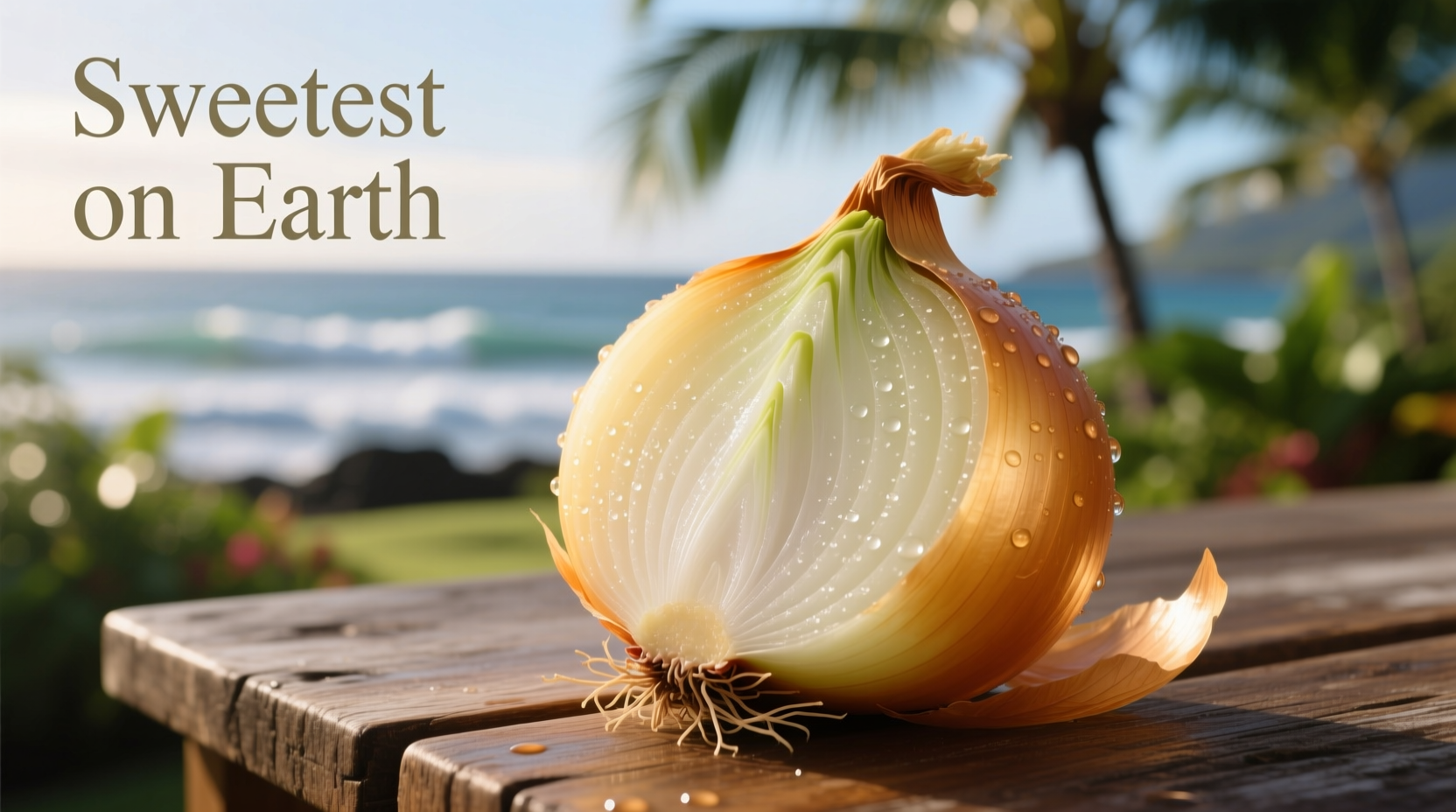If you're wondering what makes sweet Maui onions special, here's the direct answer: Grown exclusively in the volcanic soil of Maui, Hawaii, these onions have naturally low sulfur content and high sugar levels (typically 15-18% Brix), creating their signature mild, sweet flavor that can be eaten raw without causing tears. Unlike regular onions, they're protected by a federal marketing order ensuring authentic origin, with peak season running from March through June.
Discover why professional chefs reach for these prized Hawaiian gems and how you can maximize their unique flavor in everyday cooking. Whether you're selecting your first bulb or crafting the perfect onion ring, this guide delivers practical insights you won't find elsewhere.
What Makes Maui Onions Truly Unique
Maui onions aren't just another sweet onion variety—they represent a perfect storm of geography, climate, and agricultural tradition. Grown only in the nutrient-rich volcanic soil of Hawaii's western Maui plains, these onions benefit from consistent trade winds and mineral-dense earth that naturally reduces sulfur compounds responsible for pungency in standard onions.
According to the University of Hawaii's College of Tropical Agriculture and Human Resources, the specific combination of red clay soil and tropical climate creates ideal growing conditions that can't be replicated elsewhere. This geographical uniqueness earned Maui onions federal protection under the Maui Onion Federal Marketing Order, ensuring only onions grown on Maui can carry the name.
| Onion Type | Sugar Content (Brix) | Sulfur Level | Peak Season | Geographical Protection |
|---|---|---|---|---|
| Sweet Maui Onion | 15-18% | Very Low | March-June | Federally Protected |
| Vidalia Onion | 12-15% | Low | April-June | State Protected |
| Walla Walla Sweet | 10-12% | Moderate | July-August | Regional Name |
| Standard Yellow Onion | 4-6% | High | Year-round | None |
Selecting & Storing Your Sweet Treasure
When shopping for authentic Maui onions, look for firm bulbs with dry, papery skins and no soft spots. The smaller the diameter (under 3 inches), the sweeter the flavor profile. Avoid any with green sprouts or damp areas, which indicate age or improper storage.
Proper storage extends their shelf life significantly. Keep them in a cool, dark place with good air circulation—never refrigerate whole bulbs as moisture accelerates spoilage. When stored correctly, they maintain peak quality for 2-3 weeks. Once cut, wrap unused portions tightly in plastic and refrigerate for up to 5 days.

Culinary Applications That Shine
Maui onions' delicate sweetness transforms dishes where raw onion flavor typically dominates. Their low pyruvic acid content (measuring pungency) means you can use them generously without overwhelming other ingredients.
Professional chefs recommend these applications:
- Raw preparations: Slice paper-thin for salads, sandwiches, or as a garnish where regular onions would be too sharp
- Quick sautés: Cook over medium heat for just 3-5 minutes to preserve sweetness without caramelizing
- Grilled perfection: Thread wedges onto skewers with bell peppers for Hawaiian-style kebabs
- Pickling magic: Their natural sugar content creates beautifully balanced quick-pickled onions
Avoid high-heat cooking methods that destroy their delicate flavor compounds. When substituting in recipes calling for regular onions, use 25% less Maui onion due to their concentrated sweetness.
Authentic Hawaiian Onion Recipes to Try
Experience these onions as they're enjoyed in their place of origin with these simple preparations:
Maui Onion & Tuna Poke Bowl
Combine 1 diced Maui onion with 1 lb fresh ahi tuna, 1 diced avocado, 2 tbsp soy sauce, 1 tbsp sesame oil, and 1 tsp toasted sesame seeds. Serve over chilled sushi rice with nori strips. The onion's sweetness perfectly balances the rich tuna without overpowering it.
Caramelized Maui Onion Dip
Sauté 2 sliced Maui onions slowly in 2 tbsp butter until golden (about 20 minutes). Mix with 8 oz softened cream cheese, 1/2 cup sour cream, 1 minced garlic clove, and fresh chives. Chill for 2 hours before serving with vegetable crudités—no cooking required for the dip base.
When Maui Onions Aren't Available
During off-season (July-February), finding authentic Maui onions becomes challenging. Your best substitutes, in order of similarity:
- Vidalia onions: Closest in sweetness but slightly more pungent (best for cooked applications)
- Walla Walla sweets: Larger and milder than Vidalias, excellent for raw uses
- Red onions: Soak sliced red onions in ice water for 10 minutes to reduce sharpness
- Shallots: Use 50% more shallots for equivalent sweetness in dressings
Never substitute regular yellow onions in raw preparations calling for Maui onions—they lack the essential sugar-to-sulfur ratio that defines this specialty crop.
Common Mistakes to Avoid
Even experienced cooks make these errors with sweet Maui onions:
- Overcooking: Their sugars burn faster than regular onions—keep heat at medium or lower
- Using old bulbs: Stale Maui onions develop bitter compounds—check for firmness before purchasing
- Incorrect storage: Refrigeration causes moisture buildup that accelerates spoilage
- Substituting equal amounts: Their concentrated sweetness requires recipe adjustments
Remember that authentic Maui onions carry the official Hawaii Department of Agriculture certification mark. Be wary of "Maui-style" or "Hawaiian sweet" onions sold year-round—they're not the genuine article protected by federal regulation.











 浙公网安备
33010002000092号
浙公网安备
33010002000092号 浙B2-20120091-4
浙B2-20120091-4